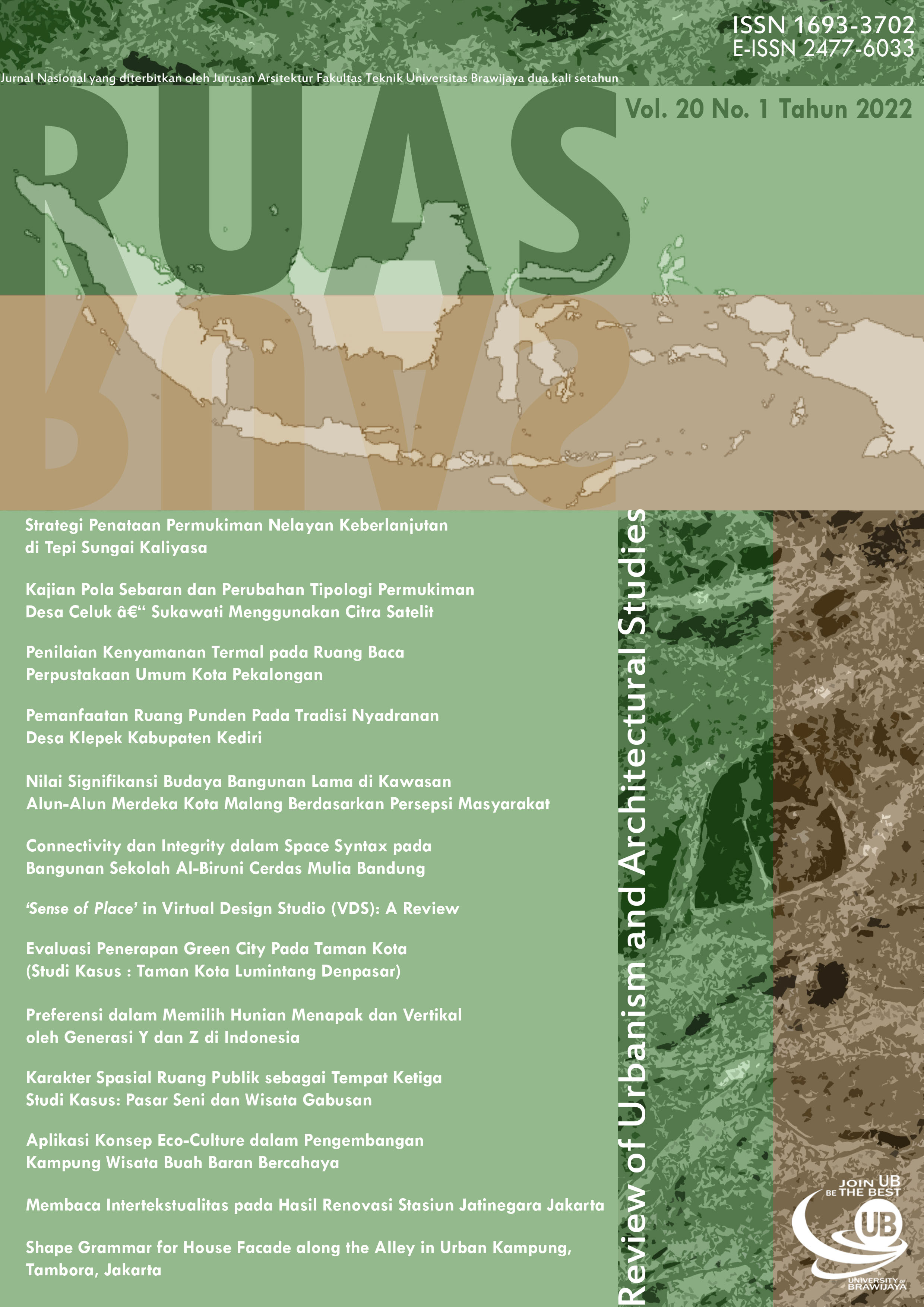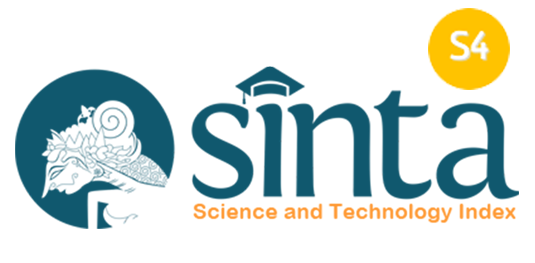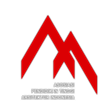Membaca Intertekstualitas pada Hasil Renovasi Stasiun Jatinegara Jakarta
DOI:
https://doi.org/10.21776/ub.ruas.2022.020.01.12Keywords:
intertextuality study, renovated Jatinegara Railway Station, architectural criticismAbstract
Jatinegara Station is considered as an A class station in Jakarta, which has been around for 111 years since it opened in 1909. This station has been redeveloped in terms of railway facilities and building infrastructure owing to the Double-doubled Track (DDT) project. This renovation attracts discourses in the topic of cultural heritage building’s sustainability, the functionality of the heritage building as an infrastructure building, and the compability of the new concourse building when being compared to the heritage building. Research based on intertextuality study is used to find reasons for development based on the historical and social aspects of today's society. The reasearch of intertextual relationship between the text of Jatinegara Station and the sociohistorical text can provide a further understanding on the renovation in the hope that the public could appreciate the renovations that has been carried out. The methodology used in this research is descriptive with a qualitative approach, the analysis will undergo through suprasegmental and intertextual technique provided by Julia Kristeva. The results is intertextuality reading of renovated Jatinegara Railway Station that is obtained through analyzing the sociohistoric text within.References
Alfaro, M. J. M. (1996). Intertextuality: Origins and development of the concept. Atlantis: Revista de La Asociación Española de Estudios Anglo-Norteamericanos, 18(1), 268– 285.
Atani, S. ., Bazrafkan, K., & Iman, R. (2020). Re-Reading of Architectural Works by Means of Intertextual Criticism Model; Case Study: Valiasr Mosque. The Monthly Scientific Journal of Bagh- E Nazar, 17(83), 41–52.
Atani, S. R., Bazrafkan, K., & Raeisi, I. (2018). Intertextual Reading of Postmodern Architecture (Based on Historicist postmodern architecture and Deconstruction). Iust.
Bakhtin, M. M., Thompson, E., Holquist, M., Emerson, C., & Holquist, M. (1981). The Dialogic Imagination: Four Essays. World Literature Today.
Biro Komunikasi dan Informasi Publik. (2018). Proyek DDT Manggarai-Cikarang Dipercepat Dari 2022 Ke 2020. Direktorat Jenderal Perkeretaapian. http://www.dephub.go.id/post/read/proyek-ddt-manggarai-cikarang-dipercepat-dari-2022-ke-2020 (diakses 1 November 2020)
Ching, F. D. K. (2007). Architecture - Form, Space & Order. John Wiley & Sons, Inc. (Vol. 53, Issue 9).
Farivarsadri, G. (1998). An Analytical Re-Assessment of Introductory Design in Architectural Education. Bilkent University.
Festić, F. (2015). Semanalysis, Psychoanalysis, and Poststructuralist Feminism. Chinese Semiotic Studies, 11(3), 317–328.
Gewirtzman, D. F. (2017). Adaptive Reuse Architecture Documentation and Analysis. Journal of Architectural Engineering Technology, 05(03).
Ghony, M. D., F. Almanshur, dan R. T. Sari. (2012). Metodologi Penelitian kualitatif. Jakarta: Ar-ruzz Media.
Hariyono, S. (2020). Ideologeme Dalam Tiga Fiksi Puya Ke Puya, Tiba Sebelum Berangkat, Sawerigading Datang Dari Laut Karya Faisal Oddang: Kajian Intertekstualitas. Universitas Negeri Yogyakarta.
Hoed, B. H. D. (2011). Semiotik dan dinamika sosial budaya. Wacana, Journal of the Humanities of Indonesia (Edisi kedu). Komunitas Bambu.
Kristeva, J. (1982). Desire in Language: A Semiotic Approach to Literature and Art. Columbia University Press.
Maulidan, A., & Kusdiwanggo, S. (2016). Penjelajahan Pengalaman Ruang berdasarkan Basis Filosofis dan Epistimologi Intuisionisme dan Pragmatisisme. 1, 105–108.
Nasri, D. (2017). Oposisi Teks Anak Dan Kemenakan Karya Marah Rusli: Kajian Intertekstual Julia Kristeva. Kandai, 13(2), 205–222.
Panagribuan, T. (2008). Paradigma Bahasa. Graha Ilmu.
Yuliarita, F., & Kusdiwanggo, S. (2016). Praksis Desain Konservasi melalui Pendekatan Preseden Historis dan Strategi Desain Rasionalisme dengan Panduan Konsep Simbiosis: Studi Desain Gedung G . Kolff & Co Jakarta. 1, 185–188.
Downloads
Published
How to Cite
Issue
Section
License
Authors who publish with this journal agree to the following terms:
- Authors retain copyright and grant the journal right of first publication with the work simultaneously licensed under a Creative Commons Attribution License that allows others to share the work with an acknowledgement of the work's authorship and initial publication in this journal.
- Authors are able to enter into separate, additional contractual arrangements for the non-exclusive distribution of the journal's published version of the work (e.g., post it to an institutional repository or publish it in a book), with an acknowledgement of its initial publication in this journal.
- Authors are permitted and encouraged to post their work online (e.g., in institutional repositories or on their website) prior to and during the submission process, as it can lead to productive exchanges, as well as earlier and greater citation of published work (See The Effect of Open Access).












